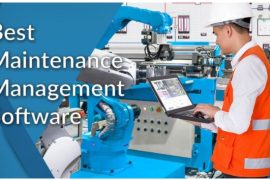In the modern, high-speed business environment, small enterprises frequently encounter the task of effectively overseeing their maintenance operations. Maintenance management holds a pivotal role in any business, exerting direct influence on productivity, asset durability, and overall operational expenses. Fortunately, the emergence of cutting-edge technology has opened up cost-effective solutions for small businesses to optimize and simplify their maintenance procedures.
In this blog post, we’ll delve into the transformation of maintenance management for small businesses through Computerized Maintenance Management Systems (CMMS) and Work Order Management Software are These cost-effective and effective solutions are reshaping the landscape, guaranteeing the seamless operation of their business activities.
What is CMMS?
CMMS, which stands for Computerized Maintenance Management System, is a software application meticulously crafted to streamline and elevate maintenance management responsibilities. It enables businesses to mechanize the planning, monitoring, and implementation of maintenance tasks for their equipment and facilities. This software establishes a centralized hub where all maintenance-related data is housed, ensuring accessibility for the maintenance team whenever they require it.
The Benefits of CMMS for Small Businesses
CMMS has the following benefits for small businesses:
1. Improved Maintenance Planning
One of the key advantages of CMMS for small businesses is the ability to plan maintenance activities more effectively. CMMS software allows businesses to schedule preventive maintenance tasks based on equipment usage or time intervals, ensuring that critical maintenance activities are never overlooked. This proactive approach can significantly reduce downtime and prevent costly breakdowns.
2. Enhanced Asset Management
Small businesses often have limited resources and cannot afford unexpected equipment failures. CMMS enables businesses to maintain a detailed record of their assets, including equipment specifications, maintenance history, and warranty information. This comprehensive asset management helps in optimizing asset performance and extending their lifespan.
3. Streamlined Work Order Management
Efficient work order management is crucial for small businesses to assign, prioritize, and track maintenance tasks effectively. CMMS simplifies this process by allowing users to create, assign, and monitor work orders seamlessly. This ensures that maintenance requests are addressed promptly, reducing operational disruptions.
Work Order Management Software: A Vital Component
Work Order Management Software is an integral part of CMMS, specifically designed to manage and track work orders efficiently. It streamlines the entire work order process, from creation to completion, ensuring that maintenance tasks are executed promptly.
Many small businesses hesitate to invest in CMMS due to cost concerns. However, there are affordable CMMS solutions available that cater to the specific needs of small enterprises. These solutions offer essential features without breaking the budget.
1. Cloud-Based CMMS
Cloud-based CMMS systems eliminate the need for expensive hardware and IT infrastructure. Small businesses can subscribe to these solutions on a monthly or annual basis, paying only for the features they require. This eliminates upfront capital expenses and provides flexibility in scaling as the business grows.
2. Mobile Accessibility
Modern CMMS solutions often come with mobile apps, allowing maintenance teams to access information and manage work orders from anywhere. This enhances flexibility and responsiveness while reducing the need for dedicated office space.
Conclusion
In conclusion, CMMS and Work Order Management Software offer affordable and efficient solutions for small businesses looking to streamline their maintenance management processes. These tools enable improved maintenance planning, enhanced asset management, and streamlined work order management. By investing in cost-effective CMMS solutions, small businesses can reduce downtime, extend asset lifespans, and ultimately improve their bottom line.



